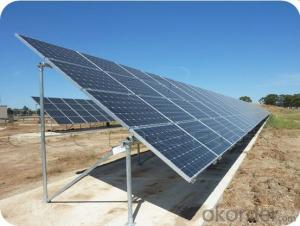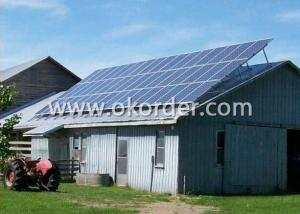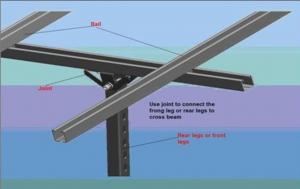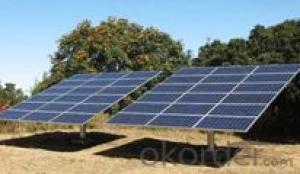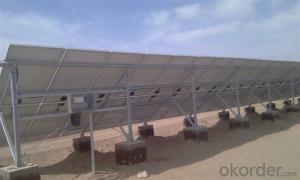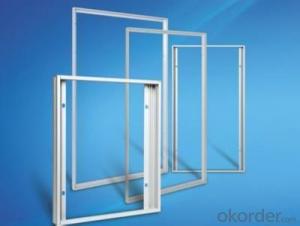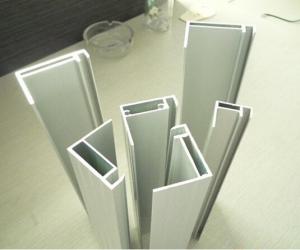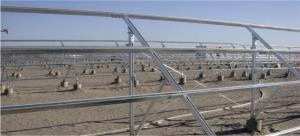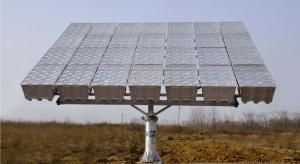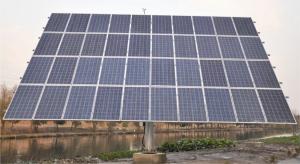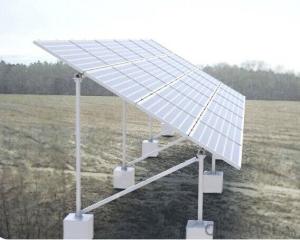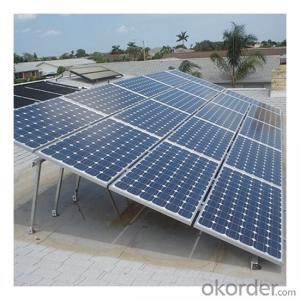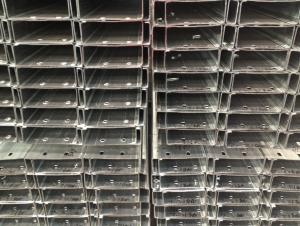Solar Panel Monting System TT-FK-04
- Loading Port:
- Shanghai
- Payment Terms:
- TT OR LC
- Min Order Qty:
- -
- Supply Capability:
- 50万套 set/month
OKorder Service Pledge
OKorder Financial Service
You Might Also Like
PV Mounting brackets are special solar photovoltaic systemfor placing, installing, fixing the solar panel design. Generally materials arealuminum, steel structure, stainless steel. PV mounting products at groundmounting system, flat roof mounting system, adjustable angle roof rack system,inclined roof rack system, column bracket system.
The Ground Mounting System including concret basement sysytemand steel pipe sysytem, Titanergy provides total solution for flat or pitchedroof with patent products.On the basis of the given project data, specificnational standards and guidelines, Titanergy will calculate the completestructural analysis and create a complete project plan to make sure reliablestructural safety.We provide high quality HDG steel and aluminum products forthe ground mounting sysytem,witch can make sure the security and durability ofthe project.
Features and Advantages
n The rail bracket is easy to install, just use simple tools(eg, Allen wrench) can be easily installed. Rail connecting member can freelyadjust the length, the stent may be pre-installed on the roof, and thenappropriately adjusted according to the size of the solar panel.
n The combination of strong, aluminum rails and card blocks fora variety of venues and a variety of materials roofs (such as metal, ceramicand other kinds of tile surface)
n Component compatibility, and rail can meet PV modules fromdifferent manufacturers.
n accuracy, the length of the rail to the nearest millimeter,the construction process, not because of the length is too long or too shortfor the second cut.
n flexible assembly, rail hooks can adjust the spacing modulearray and tile has been installed successfully address the uneven roofconstruction led to difficult problems.
n design standards, product design and development process instrict accordance with GB, the German standards and other internationalstandards to ensure products reach the world advanced level.
n Quality assurance, the stent main material is high-qualityaluminum and stainless steel, effectively prevent corrosion of oxidation.Products can be recycled, reducing environmental pollution.
n Carried out strictly according to the current specificnational standards
n Perfectly optimized components and complete structuralanalysis for the sysytem
n High corrosion resisitance ensure the stability and highdurability
n Total test and certification make sure the high quality ofthe products
n Maximum pre-assembled in factory,quick mounting onsite,timesaving
10-year durability warranty
Technical Data
n Design Period:25 years
n Installation Site: Open area
n Array Angle:10°~60°
n ModuleType:Framed or unframed
n Material:Q235B,Al 6063-T5,Al 6005-T5,StainlessSteel A2-70
n Coating:HDG/Anodised
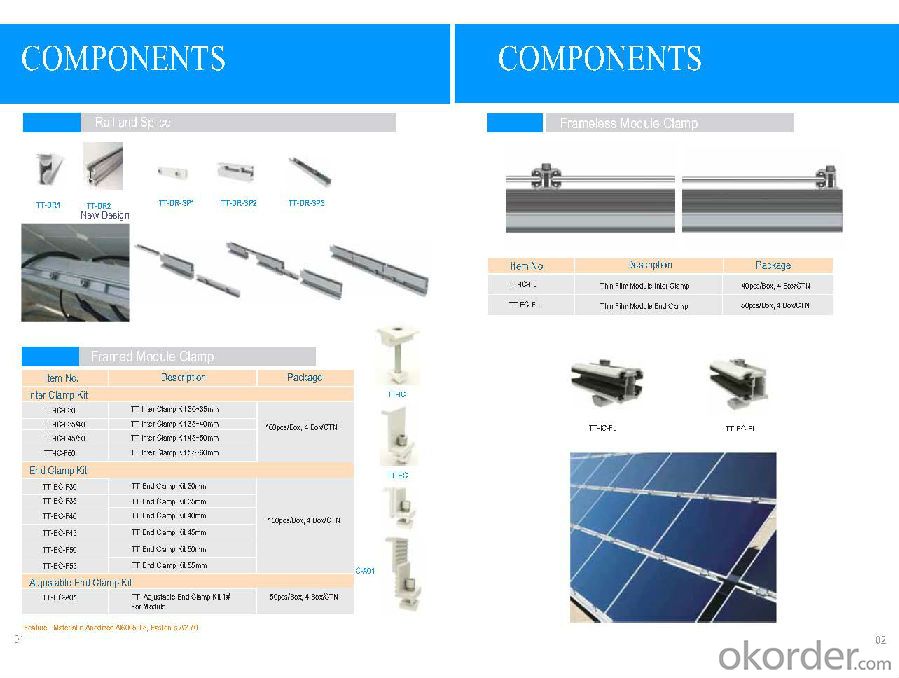

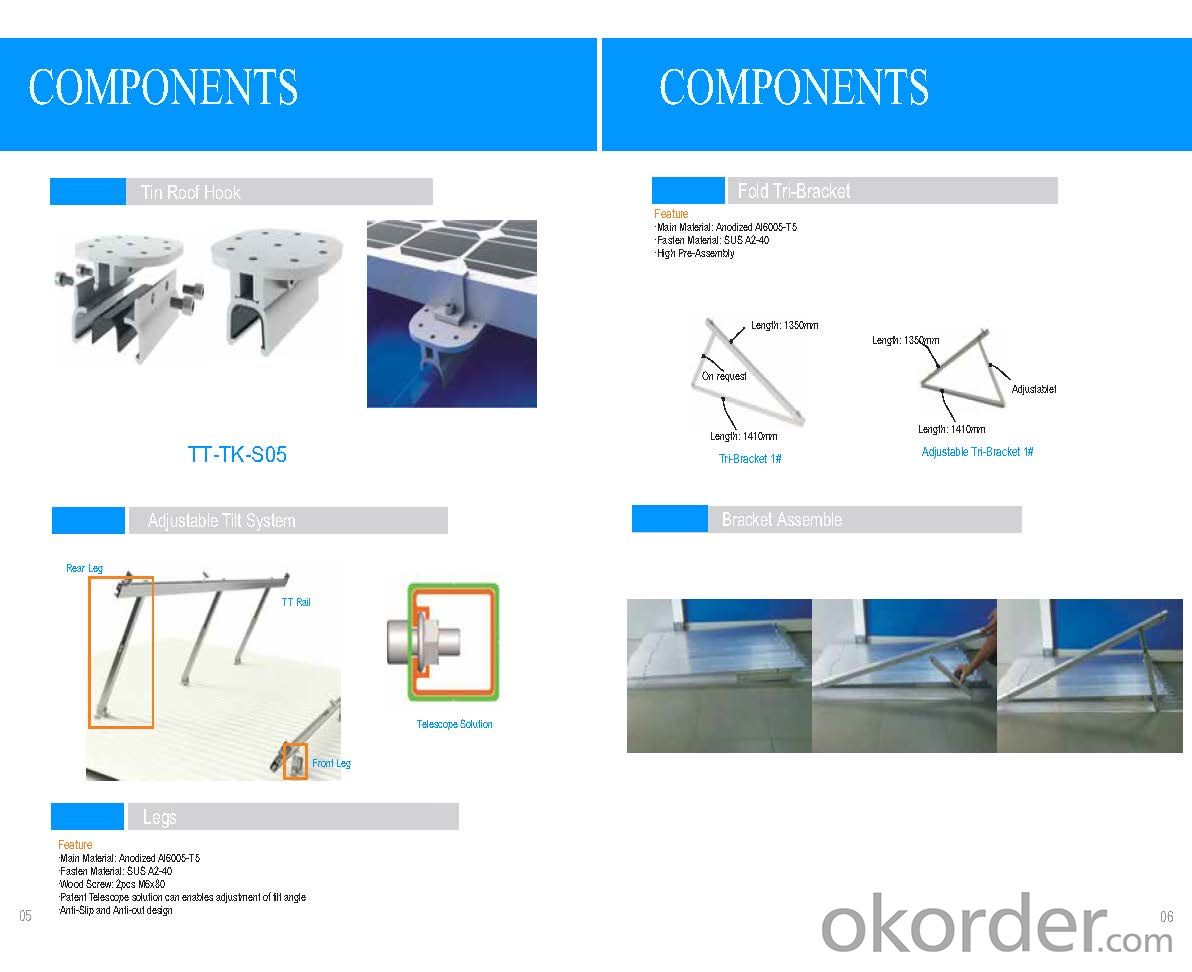
- Q:Are there any fire safety considerations for solar mounting systems?
- Yes, there are fire safety considerations for solar mounting systems. It is important to ensure that the mounting system is properly installed and maintained to prevent any potential fire hazards. This includes using fire-resistant materials, proper grounding and electrical wiring, and following local fire code regulations. Additionally, regular inspection and maintenance of the system can help identify and address any potential fire risks.
- Q:Can a solar mounting system be used for solar-powered emergency backup systems or disaster relief efforts?
- Yes, a solar mounting system can be used for solar-powered emergency backup systems or disaster relief efforts. These systems can be quickly deployed and provide reliable and sustainable power during emergencies or in areas affected by natural disasters. The solar mounting system helps to securely and efficiently install solar panels, ensuring optimal energy generation for power supply in critical situations.
- Q:Can a solar mounting system be used in areas with limited access to demand response programs?
- Yes, a solar mounting system can still be used in areas with limited access to demand response programs. While demand response programs allow for better integration of solar energy into the grid by incentivizing users to adjust their energy consumption based on supply and demand, a solar mounting system can still generate renewable energy regardless of demand response participation. The solar system can offset electricity consumption from the grid, reduce utility bills, and contribute to a cleaner and more sustainable energy mix, even in areas without demand response programs.
- Q:Are there any specific requirements for installing solar mounting systems in snowy or icy regions?
- Yes, there are specific requirements for installing solar mounting systems in snowy or icy regions. These requirements include using specialized snow guards or snow retention systems to prevent snow accumulation on the solar panels, ensuring the mounting system is designed to withstand heavy snow loads, and using anti-icing coatings or materials to prevent ice formation on the panels. Additionally, the tilt angle of the panels may need to be adjusted to optimize snow shedding and maximize energy production in these regions.
- Q:What are the key components of a solar mounting system?
- The key components of a solar mounting system include solar panels, mounting brackets or rails, roof anchors or ground mounts, and various hardware such as clamps, bolts, and nuts. These components work together to securely and efficiently attach the solar panels to the desired surface, whether it is a roof or the ground, while ensuring proper alignment and stability.
- Q:Are there any specific requirements for tile hooks when using a solar mounting system on a tile roof?
- Yes, there are specific requirements for tile hooks when using a solar mounting system on a tile roof. The tile hooks need to be compatible with the specific type and design of the tiles on the roof. Additionally, they should be able to securely fasten the solar panels while also ensuring the integrity and waterproofing of the roof. It is important to consult with a professional installer or engineer to ensure that the tile hooks used meet all the necessary requirements for a safe and effective installation.
- Q:Are there any specific requirements for pergola or shade structure design when using a solar mounting system?
- Yes, there are specific requirements for pergola or shade structure design when using a solar mounting system. These requirements primarily include ensuring structural integrity and stability to support the weight of the solar panels. Additionally, the design should allow for proper airflow around the panels to prevent overheating. It is also important to consider the orientation and tilt angle of the panels for optimal solar energy production.
- Q:Can a solar mounting system be used in areas with government subsidies?
- Yes, a solar mounting system can definitely be used in areas with government subsidies. Government subsidies and incentives are often provided to promote the adoption of renewable energy, including solar power. These subsidies can offer financial support and incentives for installing solar systems, which includes the solar mounting system. Therefore, utilizing a solar mounting system in areas with government subsidies can help maximize the benefits and cost-effectiveness of the solar installation.
- Q:Can a solar mounting system be used in areas with limited access to electric vehicle charging infrastructure?
- Yes, a solar mounting system can be used in areas with limited access to electric vehicle charging infrastructure. Solar mounting systems can generate electricity from sunlight and can be used to charge electric vehicles directly or to store the generated energy in batteries for later use. This allows EV owners in such areas to rely on solar power to charge their vehicles, reducing their dependence on traditional charging infrastructure.
- Q:Are there any specific requirements for foundation when using a solar mounting system on flat ground?
- Yes, there are specific requirements for the foundation when using a solar mounting system on flat ground. The foundation needs to be strong and stable enough to support the weight of the solar panels and withstand various environmental conditions such as wind, snow, and seismic activity. Additionally, the foundation should be leveled and properly anchored to ensure the durability and longevity of the solar mounting system.
1. Manufacturer Overview |
|
|---|---|
| Location | |
| Year Established | |
| Annual Output Value | |
| Main Markets | |
| Company Certifications | |
2. Manufacturer Certificates |
|
|---|---|
| a) Certification Name | |
| Range | |
| Reference | |
| Validity Period | |
3. Manufacturer Capability |
|
|---|---|
| a)Trade Capacity | |
| Nearest Port | |
| Export Percentage | |
| No.of Employees in Trade Department | |
| Language Spoken: | |
| b)Factory Information | |
| Factory Size: | |
| No. of Production Lines | |
| Contract Manufacturing | |
| Product Price Range | |
Send your message to us
Solar Panel Monting System TT-FK-04
- Loading Port:
- Shanghai
- Payment Terms:
- TT OR LC
- Min Order Qty:
- -
- Supply Capability:
- 50万套 set/month
OKorder Service Pledge
OKorder Financial Service
Similar products
New products
Hot products
Related keywords
